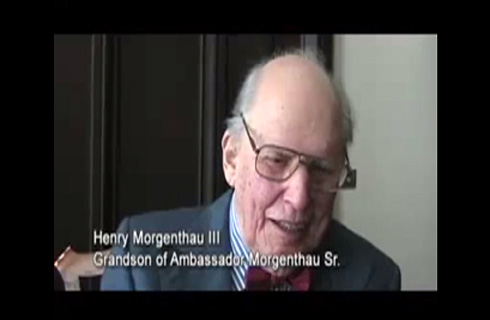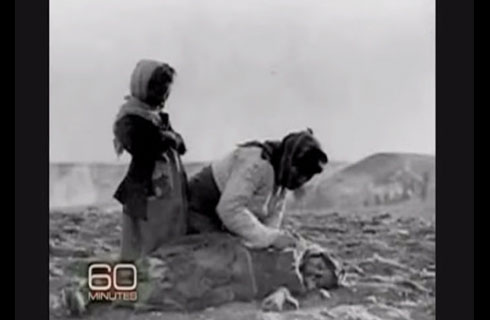BACKGROUND
Armenian Genocide 1915-1923

“I am confident that the whole history of the human race contains no such horrible episode as this. The great massacres and persecutions of the past seem almost insignificant when compared with the sufferings of the Armenian race in 1915.”
-Henry Morgenthau,
American ambassador to
the Ottoman Empire, 1913–1916.

The Historical background of the Armenian Genocide and Denial, the Tenth Stage of Genocide.
Perpetrator(s): The Young Turk government
Affected Group(s): Armenians
1915-1923
Ottoman Empire (modern-day Turkey)
The Ottoman Empire spanned over the Balkans in the Middle East from the fourteenth to the twentieth century. During the Genocide the Empire bordered Russia, Iraq, Syria, Greece, Bulgaria and the Mediterranean Sea.
For over thousands of years, Armenians resided in Mesopotamia, governed by various empires such as the Greeks, Romans, Byzantines, Persians, Arabs and Mongols. This community flourished with its unique language, literature, art and architecture. In 301 C.E., Armenia was the first nation to adopt Christianity as a state religion. The Ottomans invaded the Armenian homeland during the eleventh century and took control over the region. Due to European industrialization and the weakening of the government, the empire experienced a decline in the nineteenth century. By the end of the century, several of its inhabitants, such as the Greeks, Serbians and Romanians gained independence; however the Arabs in the Middle East and the Armenians remained under Ottoman rule. Although Armenians could practice their faith, the mass persecution of Armenians citizens was a regular practice and the Armenian community was scapegoated for the Ottoman Empire’s problems. The Ottoman Sultan began to institute programs against the Armenians between 1894-1986 as the result of a continuous religious and ethnic divide between the Muslim Turks and the Christian Armenians and their push for social and political reform.
When World War I started, the Ottoman Empire joined the Central Powers. As the world was engaged in war, the Ottoman Empire began a systematic campaign to eliminate the Armenians in the Empire. Ottoman authorities created widespread propaganda against Armenians under the belief that they were a threat to the national security. The propaganda was disseminated through sermons of town criers and Muslim mullahs who labeled Armenians infidels, traitors and spies.
On April 24, 1915 Armenian intellectuals and leaders were arrested, tortured and killed. The Armenians serving in the military were forced into hard labor after the confiscation of their weapons. Meanwhile, Armenians’ property was also confiscated throughout the empire. Armenian men were arrested and killed in mass shootings as women, children, and the elderly were taken out of their homes and forced to desert. Thousands of Armenians died and those who survived were put into concentration camps. Massacres took place on an indiscriminate basis against men, women, and children of all ages throughout the entire empire. The government organized special units to kill villagers, raid homes, kidnap women into a life of servitude, and rape girls and women.
Despite the hundreds of eyewitnesses from several officials around the world, the killings continued until 1923 as their new leader, Mustafa Kemal, expelled the rest of the Armenians, in addition the Greeks and Assyrians.
An armed intervention never took place even though there was overwhelming knowledge and awareness of the atrocities.
Contemporary scholars estimate that over 1.5 million Armenians were killed in the genocide. In addition, tens of thousands were displaced and their land and property no longer belonged to them. The official stance of the Turkish government is that what took place was not a genocide and actively denies the intentional nature of the annihilation.
The Armenian genocide provided a precedent for future genocides.
The Armenian genocide influenced Adolf Hitler’s quest to eliminate the Jews. In a speech given prior to his invasion of Poland in 1939, Hitler stated:
“I have issued the command — and I’ll have anybody who utters but one word of criticism executed by a firing squad — that our war aim does not consist in reaching certain lines, but in the physical destruction of the enemy. Accordingly, I have placed my death-head formation in readiness — for the present only in the East — with orders to them to send to death mercilessly and without compassion, men, women, and children of Polish derivation and language. Only thus shall we gain the living space (Lebensraum) which we need. Who, after all, speaks today of the annihilation of the Armenians?”
“It may look amazing, but the reality of what happened in 1915 as mass murder was accepted by everybody having lived in that period, and was never the object of an argument.”
— Taner Akcam, Professor and Chair in Armenian Genocide Studies at Clark University, born in Ardahan province, Turkey, is the author of ten scholarly works of history and sociology including A Shameful Act.

Upon the 100th anniversary of World War I and the genocide of the Armenians, it is important to recognize the Armenian Genocide as a pivotal turning point in the history of genocide prevention, international law, and human rights. Read more.
Further Research:
• http://genocidewatch.net
• http://worldwithoutgenocide.org/genocides-and-conflicts/darfur-genocide
• http://www.preventgenocide.org
• http://endgenocide.org/learn/past-genocides/
• http://www.teachgenocide.org
• http://www.armenian-genocide.org/genocidefaq.html
• http://www.theforgotten.org/site/intro_eng.html
• http://www.genocide1915.info
• http://www.history.com/topics/armenian-genocide
• http://100years100facts.com/fact-category/armenian-genocide/
• http://www.unitedhumanrights.org/genocide/armenian_genocide.htm
• http://www.genocide-museum.am/eng/photos_of_armenian_genocide.php
